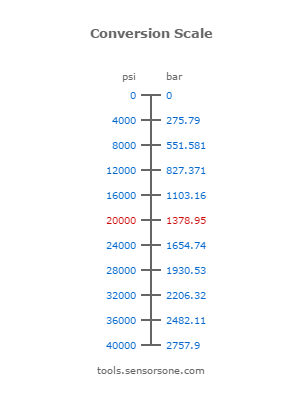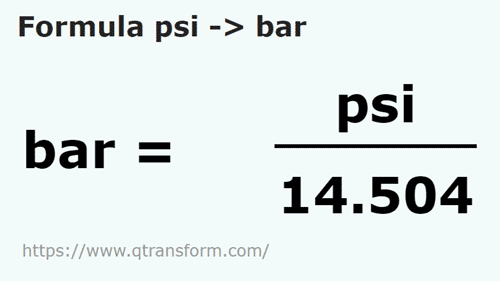

It is certainly possible to have a negative gauge pressure, but not possible to have a negative absolute pressure. A perfect vacuum would correspond to absolute zero pressure. When the local atmospheric pressure is greater than the pressure in the system, the term vacuum pressure is used.

The term gauge pressure is applied when the pressure in the system is greater than the local atmospheric pressure, p atm. When pressure is measured relative to atmospheric pressure (14.7 psi), it is called gauge pressure (psig). Since atmospheric pressure at sea level is around 101.3 kPa (14.7 psi), this will be added to any pressure reading made in air at sea level. Pounds per square inch absolute (psia) is used to make it clear that the pressure is relative to a vacuum rather than the ambient atmospheric pressure. When pressure is measured relative to a perfect vacuum, it is called absolute pressure (psia). Although absolute pressures must be used in thermodynamic relations, pressure-measuring devices often indicate the difference between the absolute pressure in a system and the absolute pressure of the atmosphere existing outside the measuring device. But in engineering we often deal with pressures, that are measured by some devices. In this article the term pressure refers to absolute pressure unless explicitly stated otherwise. Often it will be important to distinguish between absolute pressure and gauge pressure.
#1 bar to psi at sea level plus#
But the absolute pressure is 11bar (1bar is the atmospheric pressure on the water surface, plus 10bar water pressure).įind this article interesting? Have a read of our other sensor reference articles.Pressure as discussed above is called absolute pressure.

Water Pressure at 100mĪt 100m, water pressure is 10bar, relative to the surface. The pressure in water increases by 1bar for every 10m depth. Water is about 1000 times heavier than air, and so 1 litre of water has a mass of 1kg and a volume of 1000cm³.Īgain, if we produce a column 10m high and 1cm² area, we will create a water pressure of 1kg/cm² at the bottom (1kg/cm² = 1bar). Pilots will ask for the barometric pressure at runway level prior to landing, and mountain climbers will correct their altimeters at a location of known altitude. They always need correction for the variation of that pressure. Pressure at 100mĪt 100m above sea level, the air pressure is approximately 990mbar, so the air pressure has decreased by approximately 10mbar.Īltimeters are based on these changes of the atmospheric pressure and are used in aircraft and by mountain climbers. Air pressureġ litre of air has a weight of approximately 1 gram.Ī column of air 10m high and 1cm² area (1 litre) creates a pressure of 1g/cm² = 1mbar, so the pressure at sea level is approximately 1000mbar.
#1 bar to psi at sea level how to#
The typical altimeter (and/or depth gauge) is a pressure measuring instrument that calculates its altitude (or depth) according to the local air or water pressure.īelow we explain how is pressure related to altitude and depth and show you how to calculate both air pressure and water pressure.


 0 kommentar(er)
0 kommentar(er)
